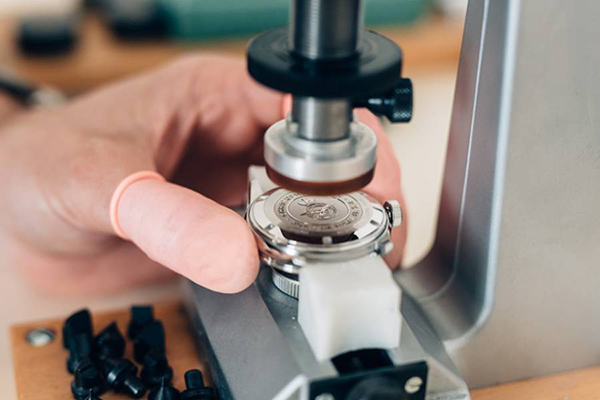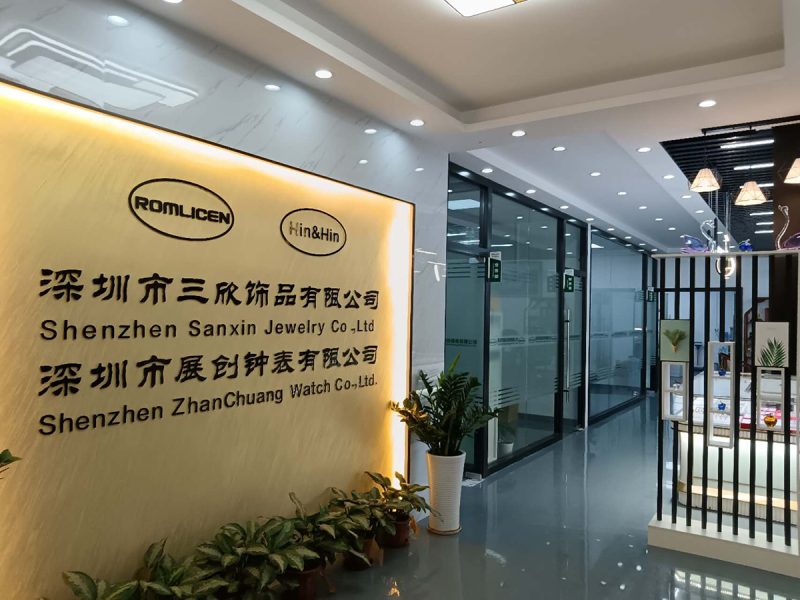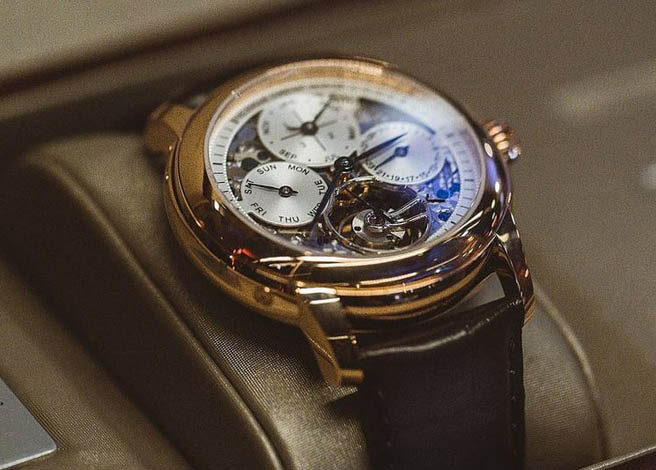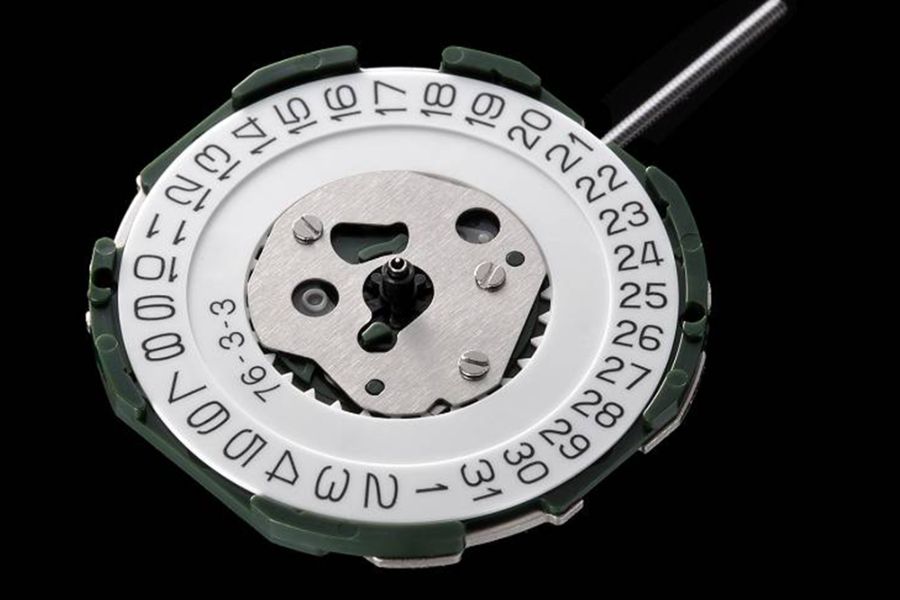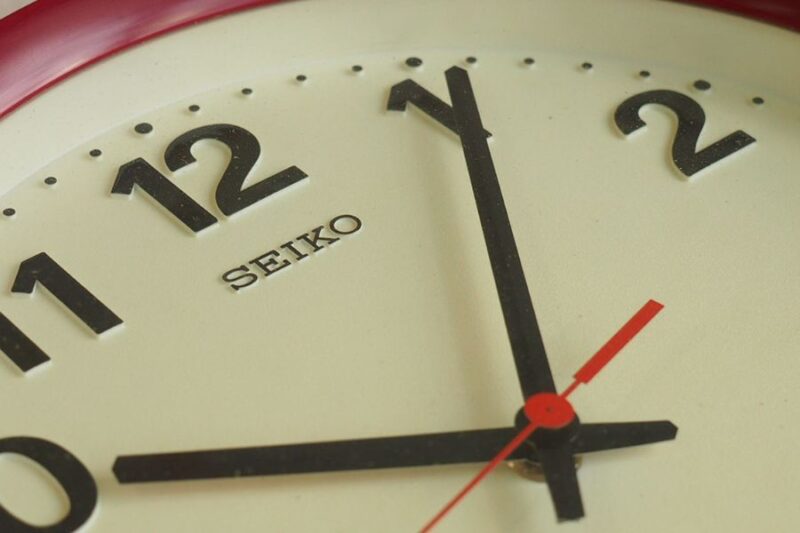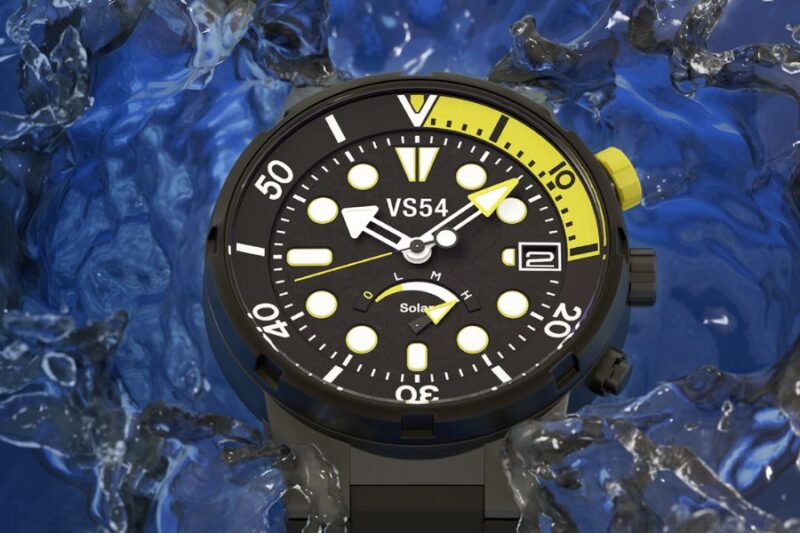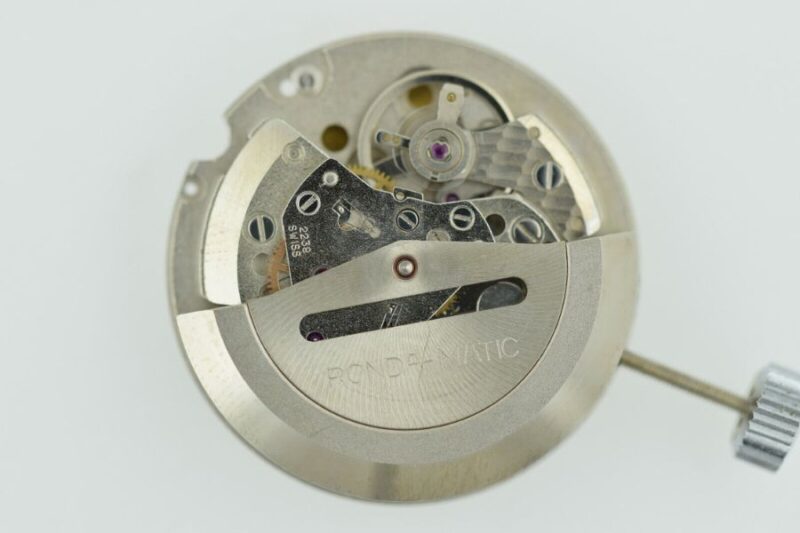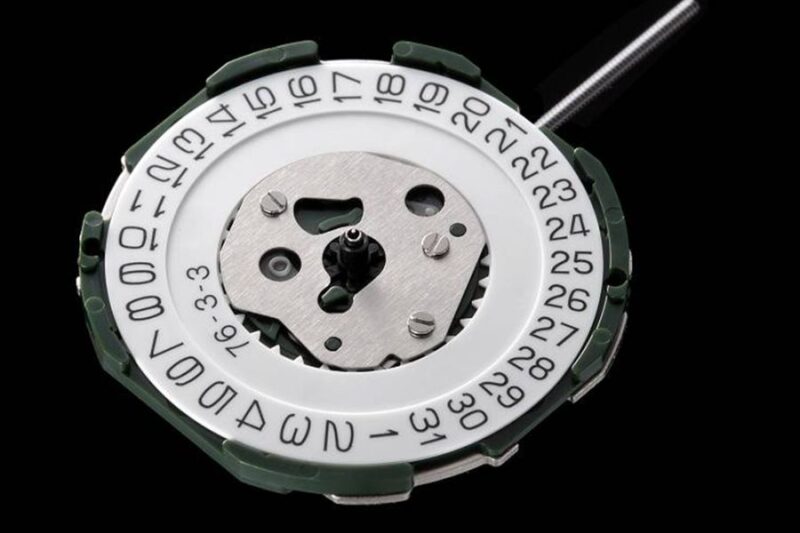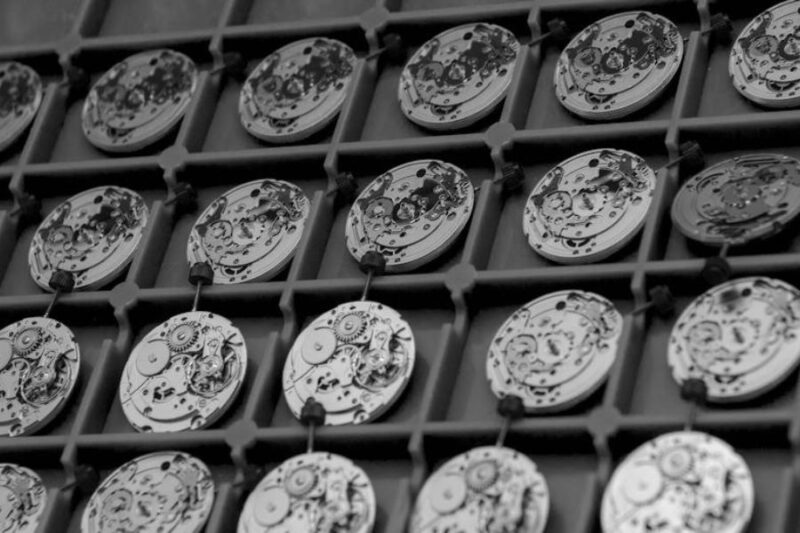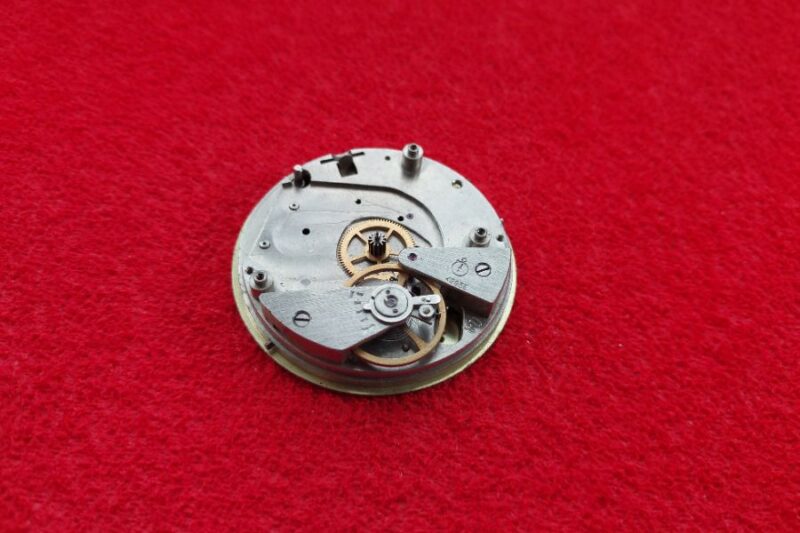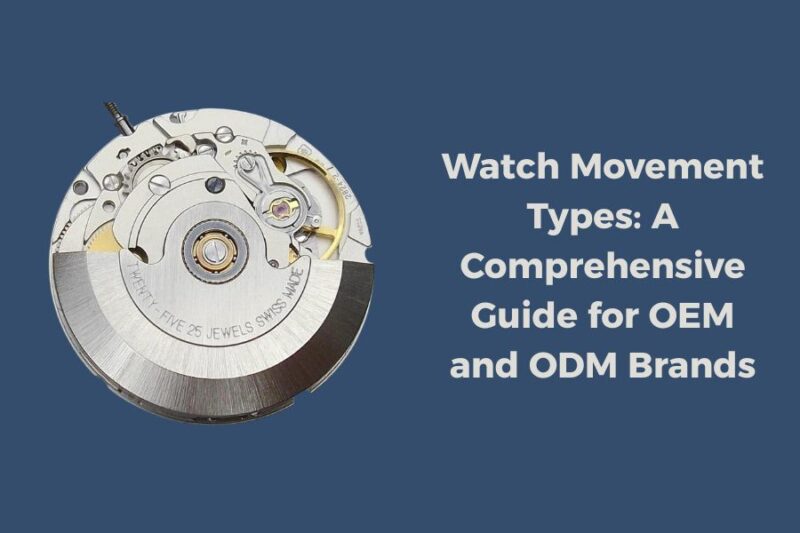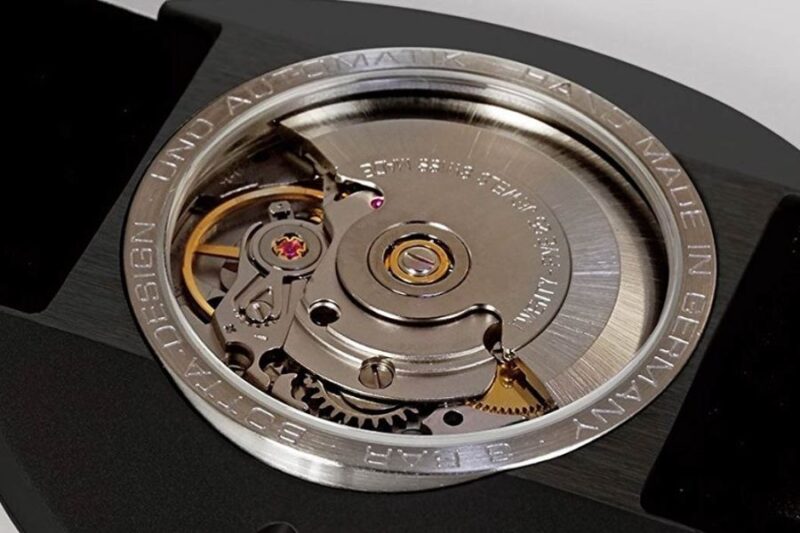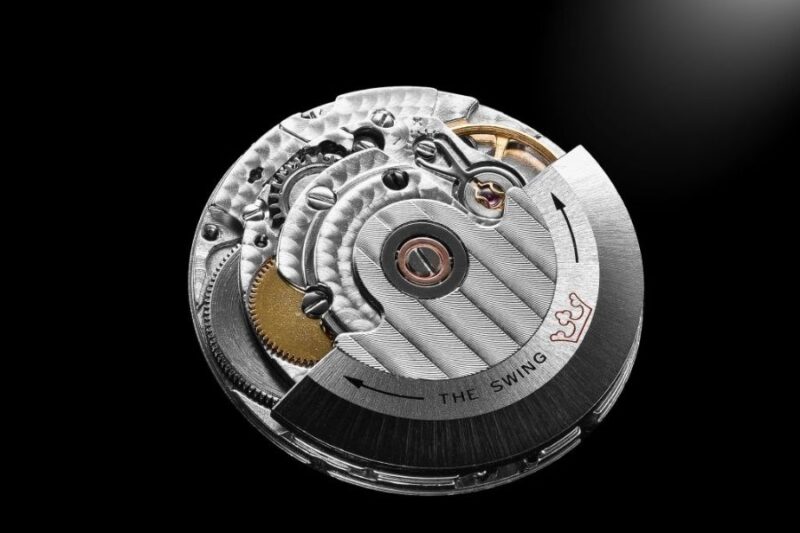Table of Contents
Introduction
In the intricate world of horology, the beating heart of a timepiece – its movement – often determines not just its accuracy and reliability, but its entire character. Among the most respected names in this specialized field, Miyota watch movements have carved out a reputation that balances precision engineering with accessible value, making them a cornerstone of modern watchmaking.
Manufactured by Citizen Watch Co.‘s movement division, Miyota mechanisms power countless timepieces across the globe, from boutique micro-brands to established watchmakers seeking reliable Japanese engineering. What distinguishes these movements isn’t merely their technical specifications, but their versatility and adaptability to various watch designs and price points – creating a unique positioning in an industry where Swiss dominance has long been the norm.
For OEM and ODM watch manufacturers like ourselves, understanding the nuances of Miyota’s diverse movement catalog isn’t just academic knowledge – it’s essential business intelligence that shapes production decisions, client recommendations, and ultimately, the final product’s quality and market positioning. This comprehensive exploration will navigate through Miyota’s extensive lineup, examining everything from their workhorse automatic calibers to specialized quartz solutions that combine tradition with modern technological innovations.
Whether you’re considering Miyota movements for your next watch collection, seeking alternatives to more expensive Swiss options, or simply fascinated by the engineering that powers modern timepieces, this guide provides the insights necessary to appreciate why Miyota has become synonymous with dependable Japanese watchmaking excellence.

The History and Background of Miyota Movements
Miyota’s story begins as an integral part of the Citizen Watch Company, one of Japan’s most influential watchmaking enterprises. Established in 1959 as Citizen’s dedicated movement manufacturing division, Miyota was strategically positioned in Miyota-machi, Nagano Prefecture—a location that would eventually lend its name to this powerhouse of Japanese horology. The division was created with a clear mission: to develop and produce reliable watch movements that could compete on the global stage while maintaining accessible price points.
Development Milestones
The 1970s and 1980s marked pivotal decades for Miyota as they established their reputation during the quartz revolution. While Swiss watchmaking faced existential challenges, Japanese manufacturers including Miyota capitalized on new technologies, introducing innovative quartz calibers that offered unprecedented accuracy at competitive prices.
By the 1990s, when mechanical watchmaking experienced its renaissance, Miyota was prepared with exceptional automatic movements that would later evolve into their renowned 8000 and 9000 series. The introduction of the 8215 caliber in particular—a robust, affordable automatic movement—revolutionized the mid-tier mechanical watch market and remains influential decades after its debut.
The early 2000s saw Miyota further cement its position with the introduction of the premium 9000 series movements, offering enhanced accuracy, smoother operation, and refined finishing—narrowing the gap between Japanese efficiency and Swiss prestige.
Global Industry Impact
Miyota’s approach to movement manufacturing fundamentally altered the watchmaking landscape in several ways:
First, by providing reliable, mass-produced movements at competitive prices, they democratized quality watchmaking, allowing smaller brands to enter the market without investing in costly in-house caliber development.
Second, their consistent quality standards established Japanese movements as a legitimate alternative to Swiss options, challenging the industry’s geographic hierarchy.
Third, Miyota’s manufacturing scale brought economies that benefited the entire supply chain—from watch brands to consumers—making well-crafted timepieces more accessible globally.
Today, Miyota movements power watches across virtually every continent, with production facilities that combine traditional watchmaking expertise with cutting-edge manufacturing technology. Their influence extends beyond their parent company, as countless independent watchmakers rely on their calibers as trusted foundations for creative timepiece designs.
This rich heritage of innovation, reliability, and accessibility continues to define Miyota’s contribution to modern horology—a Japanese success story that transformed from a domestic manufacturer into a global movement powerhouse.

Miyota Movement Types and Series
1. Automatic Mechanical Movement Series
Miyota’s reputation in the mechanical movement sphere rests primarily on two cornerstone series that cater to different market segments and performance requirements.
9000 Series: Premium Performance
The 9000 series represents Miyota’s top-tier automatic offerings, designed to compete with higher-end movements while maintaining value-conscious pricing. The flagship 9015 caliber stands as a 24-jewel movement featuring a respectable 42-hour power reserve, accurate to -10/+30 seconds per day, and beating at a smooth 28,800 vibrations per hour (4Hz). Its slim profile (3.9mm height) makes it particularly valuable for dress watch designs where case thickness is crucial. Notable variants include:
- 9039: A no-date version of the 9015, perfect for clean dial designs
- 9075: Featuring a GMT complication for tracking multiple time zones
- 9100: A multi-function chronograph movement with day/date display
What distinguishes the 9000 series is not just technical specifications but the refined finishing and stability under varied conditions, making these movements suitable for premium watch offerings.
8000 Series: Reliable Workhorses
The venerable 8000 series has been Miyota’s backbone for decades, with the 8215 caliber achieving near-legendary status for its unfailing reliability and cost-effectiveness. These 21-jewel movements operate at 21,600 vibrations per hour (3Hz) with approximately 40-hour power reserve. Though slightly less refined than the 9000 series (with noticeable rotor noise and indirect-drive seconds), they deliver exceptional value for entry and mid-level mechanical watches. Key variants include:
- 8215: The classic three-hand with date function
- 8217: With day-date complication
- 821A: Features a no-date configuration
2. Quartz Movement Series
Miyota’s quartz offerings showcase their technical versatility, spanning from basic timekeepers to sophisticated hybrid systems.
OS Series: Chronograph Specialists
The OS series specializes in chronograph functions with various subdial configurations. The popular OS20 offers three-register chronograph capabilities with 1/1 second precision, while the OS10 provides two-register functionality with date display. These movements deliver accurate timing functions at a fraction of mechanical chronograph costs.
2000/6000 Series: Everyday Reliability
These series cover standard three-hand configurations with various complications including date, day-date, and small seconds. The reliability and slim profile of movements like the 2035 make them ideal for fashion watches and entry-level timepieces.
3. Specialized Function Movements
Beyond standard configurations, Miyota produces specialized movements including:
- Solar-powered calibers: Integrating photovoltaic technology with quartz precision
- Slim Series: Ultra-thin movements (as low as 1mm) enabling sleek case designs
- Multi-function movements: Offering moon phase, perpetual calendars, and other complex complications at accessible price points
Hybrid and Innovative Calibers
Responding to changing market demands, Miyota has developed innovative movements that blend traditional craftsmanship with modern technology:
- Automatic-quartz hybrids: Combining self-winding mechanics with quartz regulation
- Skeletonized variants: Revealing movement architecture through strategic cutaways
- High-frequency quartz: Delivering enhanced accuracy through advanced regulator design
Each movement series is engineered to meet specific market needs, from affordable volume production to specialized applications, cementing Miyota’s reputation as one of the most versatile movement manufacturers in the global watch industry.
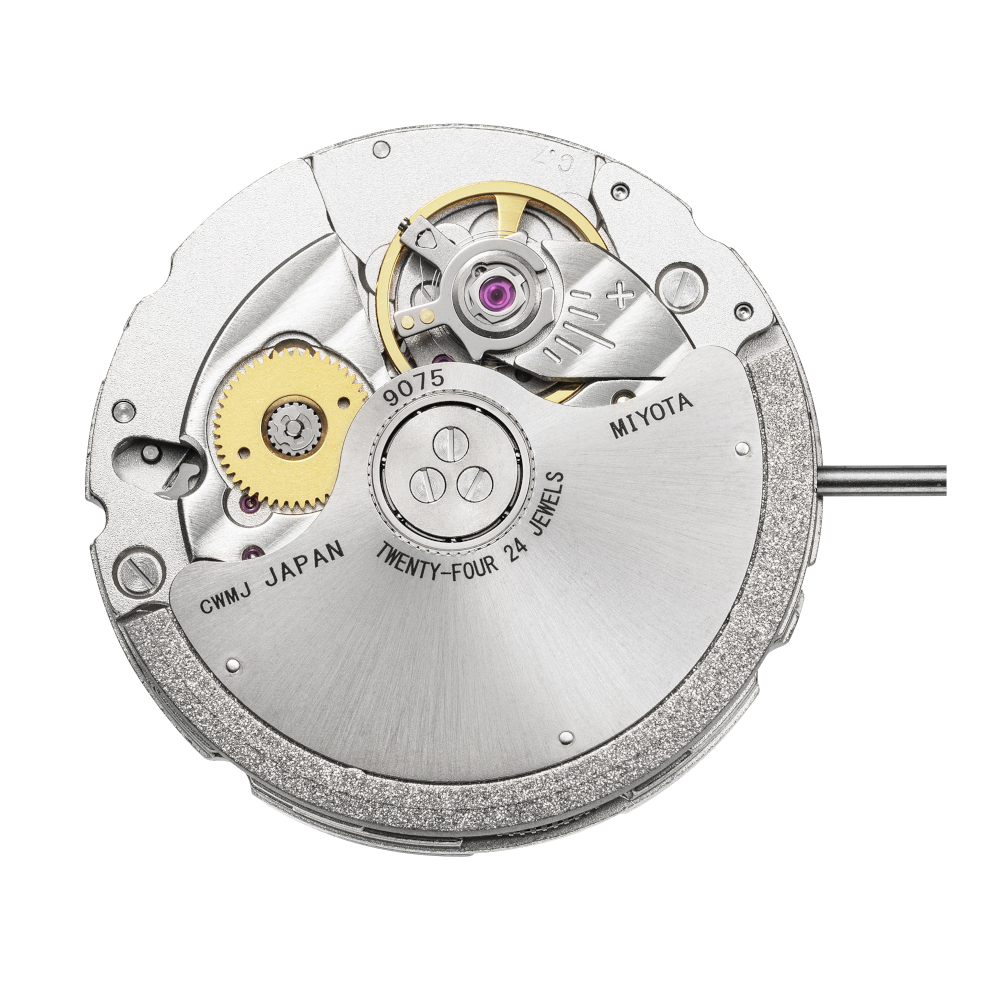
Technical Characteristics of Miyota Movements
Manufacturing Process and Innovation
Miyota movements exemplify Japanese manufacturing philosophy, combining traditional watchmaking principles with modern production techniques. Unlike the heavily hand-finished approach of Swiss haute horlogerie, Miyota employs precision automation alongside strategic human oversight, resulting in exceptional consistency across production batches.
Their manufacturing facilities incorporate advanced CNC machining for primary components, with tolerances measured in microns. This is complemented by proprietary heat-treatment processes that ensure optimal metallurgical properties in critical parts like balance wheels and escapement components.
One of Miyota’s notable innovations is their integrated production approach—controlling everything from raw material selection to final assembly within coordinated facilities. This vertical integration enables rapid quality feedback loops and continuous improvement in both design and execution.
Accuracy and Reliability Metrics
Miyota movements demonstrate impressive performance specifications across different categories:
Mechanical Movement Accuracy:
- 9000 Series: Factory-rated at -10/+30 seconds per day, though many examples perform closer to the COSC chronometer standard of -4/+6 seconds
- 8000 Series: Rated at -20/+40 seconds per day, with reliability prioritized over extreme precision
Quartz Movement Accuracy:
- Standard quartz: ±20 seconds per month
- High-accuracy quartz: ±10 seconds per month
- Temperature-compensated variants: As precise as ±5 seconds per month
Reliability metrics are equally impressive, with mechanical movements routinely operating 5-8 years between service intervals when properly maintained, and quartz movements demonstrating failure rates below industry averages.
Key Technical Specifications Analysis
What separates Miyota movements technically from competitors can be appreciated through specific engineering decisions:
Power Management: The automatic winding systems in Miyota’s mechanical movements feature bidirectional winding mechanisms with optimized rotor mass, providing efficient power generation without unnecessary bulk. Their mainstream automatic calibers achieve 40-42 hour power reserves—respectable figures that balance practical performance with manufacturing efficiency.
Shock Resistance: Miyota incorporates Parashock or equivalent shock protection systems across their mechanical line, protecting the delicate balance staff from impacts. Their designs frequently exceed minimum industry standards, with testing protocols that simulate real-world conditions rather than laboratory ideals.
Material Science Application: Component materials are selected for specific performance characteristics rather than aesthetic appeal:
- Mainsprings utilize specialized alloys that resist deformation and maintain consistent power delivery
- Escape wheels and pallet forks in premium lines feature polished hardened steel or proprietary synthetic rubies
- Rotor bearings incorporate tiny ball-bearing systems for smooth, quiet operation in the 9000 series
Movement Architecture: The structural design of Miyota’s movements reflects considerable evolution through iterative engineering. The architecture prioritizes stability and serviceability, with the 9000 series featuring a security-enhanced winding system and the 8000 series designed for robust performance even under challenging conditions.
While these movements lack the elaborate decoration of high-end Swiss calibers, their technical execution delivers exceptional performance-to-price ratios. This focus on functional excellence rather than ornate finishing represents Miyota’s core philosophy: creating reliable mechanical hearts for watches across diverse price points and applications.
Detailed Analysis of Key Miyota Movement Series
1. 9000 Series: Premium Calibers
The 9000 series represents Miyota’s highest engineering achievement, positioned to challenge Swiss dominance in the premium movement sector. These calibers embody sophistication without the Swiss premium price tag.
Caliber 9015: The Flagship
The 9015 stands as Miyota’s most celebrated automatic movement, often compared favorably with the ETA 2824-2. With its 24-jewel construction and high-beat 28,800 vph (4Hz) frequency, this movement delivers a sought-after smooth sweep second hand motion. Several technical refinements distinguish it:
- Hacking seconds function allowing precise time setting
- Quick-set date mechanism that advances instantaneously around midnight
- Bidirectional winding system with ball-bearing mounted rotor reducing friction
- Carefully engineered mainspring delivering a consistent 42-hour power reserve
- Slim profile at just 3.9mm height, enabling versatile case design options
Watch brands utilizing the 9015 often highlight its stability across positions, with real-world accuracy frequently outperforming factory specifications. The movement’s architecture also permits relatively straightforward servicing compared to more complex calibers.
9039: The Purist’s Choice
Essentially a 9015 minus the date complication, the 9039 caters to watch designers seeking clean, symmetrical dials without sacrificing performance. Its identical beat rate and architecture maintain all the advantages of the 9015 while eliminating the phantom date position during crown manipulation. This specialist movement has become particularly popular among micro-brands focused on minimalist design aesthetics.
9075 GMT: The Traveler’s Companion
The 9075 builds upon the proven 9015 architecture with the addition of an independently adjustable GMT hand, allowing simultaneous tracking of two time zones. Unlike some competing GMT movements, the 9075 features a “true GMT” function where the local hour hand can be adjusted separately without disturbing the minute hand—making it particularly valuable for frequent travelers. The movement maintains the same reliability metrics as the base 9015 despite the additional complication.
2. 8000 Series: The Industry Stalwarts
The 8000 series movements have powered countless watches for decades, earning a reputation for exceptional durability and cost-effectiveness.
8215: The Definitive Workhorse
The legendary 8215 caliber continues to be one of the most widely deployed automatic movements globally. Its 21-jewel construction and 21,600 vph (3Hz) beat rate strike an ideal balance between performance and serviceability. Key characteristics include:
- Non-hacking seconds with distinctive indirect drive system
- Automatic winding via unidirectional rotor mechanism
- Date function with semi-quick set capability
- Robust shock protection system
- Approximately 40-42 hour power reserve
- Remarkable durability under adverse conditions
While the 8215 lacks some refinements of premium calibers (notably the audible rotor noise and non-hacking seconds), its proven reliability under various conditions has made it the foundation of countless entry and mid-level automatic watches. Some brands have successfully modified the 8215 with custom rotors and enhanced finishing to elevate its presentation.
8217: Expanded Functionality
The 8217 builds upon the 8215 platform by adding a day display complication alongside the date function. This variant maintains the same reliable architecture while offering additional practical utility. The day-date mechanism operates smoothly with a semi-quick set system, though like other 8000 series movements, it lacks the true quick-set capability of higher-end calibers.
821A: Simplified Elegance
For watch designs prioritizing dial symmetry, the 821A offers the core 8215 experience without the date complication. This creates a cleaner crown operation experience (eliminating phantom date positions) while maintaining the proven reliability of the 8000 series platform.
3. Quartz Specialties: Precision and Innovation
OS20: Chronograph Excellence
The OS20 represents Miyota’s premier quartz chronograph caliber, featuring three subdials with 1/1 second precision over a 12-hour recording capacity. The movement’s stable power consumption and reliable reset mechanism have made it particularly valued in sports watches requiring timing functionality. Its architecture also permits creative dial layouts, offering designers substantial flexibility.
2035: The Silent Performer
Perhaps the quintessential quartz movement, the 2035 powers countless watches worldwide with unfailing accuracy and minimal maintenance requirements. Its slim profile (2.5mm) and five-year battery life make it ideal for fashion watches and everyday timepieces where reliability is paramount but mechanical complexity unnecessary.
Each movement in Miyota’s diverse portfolio reflects careful consideration of market needs and performance requirements, demonstrating why these Japanese calibers continue to power everything from affordable fashion watches to sophisticated mechanical timepieces from respected independent brands.
Miyota Movements Compared to Competitors
1. Miyota vs. Seiko Movements
When comparing Japanese movement giants, Miyota and Seiko present distinct philosophies and strengths that influence watchmakers’ choices.
Technical Approach
Miyota and Seiko diverge significantly in their mechanical movement architecture. Seiko’s popular NH35/36 (formerly 4R35/36) employs a direct-drive seconds hand and mainstream 6 o’clock stem position, while Miyota’s 8-series features an indirect-drive seconds mechanism and 3 o’clock stem orientation. These fundamental differences affect both watch design possibilities and movement behavior.
Seiko movements typically offer slightly longer power reserves (approximately 41-43 hours versus Miyota’s 40-42) and smoother second-hand motion in lower-tier models due to their direct-drive system. However, Miyota’s 9-series outperforms comparable Seiko options in slimness, making it preferred for dress watches and thinner cases.
Manufacturing and Availability
Seiko traditionally manufactures primarily for in-house use, with “overflow” movements reaching the broader market, whereas Miyota is fundamentally an OEM supplier focused on serving independent brands. This difference creates distinct market dynamics:
- During supply shortages, Seiko typically prioritizes their own brands, sometimes creating availability challenges for third-party watchmakers
- Miyota maintains more consistent availability, though with potential price variations during high-demand periods
- Seiko movements often enter the market through gray channels, while Miyota offers formal distribution networks for manufacturers
Cost-Performance Ratio
In entry-level automatic movements, Seiko’s NH35 typically offers slightly better value than Miyota’s 8215, with hacking and hand-winding capabilities at similar price points. However, in premium segments, Miyota’s 9015 often represents better value than Seiko’s comparable NE15 (6R15), offering similar performance at more competitive pricing.
2. Miyota vs. ETA Movements
The comparison between Japanese Miyota and Swiss ETA represents more than geographic differences – it reflects contrasting approaches to movement manufacturing.
Quality and Precision Parameters
ETA movements, particularly the ubiquitous 2824-2, are generally finished to higher aesthetic standards, with more attention to decoration even in basic grades. However, in pure timekeeping performance:
- Miyota’s 9015 compares favorably with standard ETA 2824-2 in accuracy tests
- ETA offers finer regulation grades (including chronometer certification) not available from Miyota
- Miyota movements demonstrate excellent consistency between units, while ETA shows more variation between grade levels
Availability and Market Position
Since Swatch Group’s strategic decision to limit ETA supply to non-group companies, Miyota has gained significant market share by offering reliable alternatives:
- ETA movements face increasingly restricted availability and rising prices
- Miyota maintains open supply channels with predictable procurement timelines
- Many brands have shifted from ETA to Miyota to ensure production continuity
Cost-Benefit Analysis
The economic comparison reveals Miyota’s strongest advantage:
- Entry-level ETA 2824-2 movements typically cost 2-3 times more than Miyota 8215
- Miyota 9015 presents approximately 40-50% cost savings compared to equivalent ETA calibers
- Service costs for Miyota movements average 30-40% less than comparable ETA servicing
This value proposition makes Miyota particularly attractive for brands targeting the $500-1500 retail segment, where movement costs significantly impact final pricing.
3. Market Perception and Brand Impact
The choice between movement suppliers carries implications beyond technical specifications:
Brand Positioning Effects
Historically, Swiss movements commanded automatic premium perception, while Japanese calibers were viewed as practical alternatives. This gap has narrowed substantially as:
- High-profile brands have successfully positioned Miyota 9-series movements as premium components
- Watch enthusiasts increasingly recognize reliability advantages of Japanese engineering
- Swiss heritage premium has diminished among younger consumers focused on performance metrics
Consumer Education Factor
Market research indicates evolving consumer awareness:
- Sophisticated watch buyers now often recognize Miyota by name and specific caliber
- Entry-level consumers remain more influenced by “Swiss Made” versus “Japan Made” designations
- Online watch communities have elevated technical understanding of relative movement strengths
For OEM/ODM manufacturers, the movement choice increasingly requires balancing technical needs, supply chain security, and target market expectations rather than simply defaulting to geographic preferences. Miyota’s consistent improvement trajectory particularly benefits brands seeking to establish long-term production stability without sacrificing performance.
Application Value in Watch Design
Why Watchmakers Choose Miyota
The decision to incorporate Miyota movements into a watch collection involves multiple strategic considerations that extend beyond simple cost calculations. Established brands and emerging microbrands alike select Miyota calibers for several compelling reasons:
Design Flexibility
Miyota’s diverse portfolio accommodates varied design visions. The slim profile of the 9015 (3.9mm) enables the creation of elegant dress watches without sacrificing mechanical integrity, while the robust construction of the 8215 supports sportier designs that prioritize durability. This dimensional versatility allows designers to pursue their aesthetic vision without making significant compromises for movement accommodation.
Furthermore, Miyota’s standardized dimensions facilitate easier case engineering, with industry-standard mounting systems that simplify the transition between prototyping and production. For brands managing multiple collections, this compatibility reduces development time and engineering costs across different watch families.
Production Reliability
Perhaps most crucially for manufacturing operations, Miyota delivers exceptional consistency in both supply and performance. Their movements arrive with predictable specifications, minimal unit-to-unit variation, and reliable delivery schedules—factors that dramatically reduce production disruptions and quality control challenges.
This reliability extends to after-sale considerations as well. The global distribution of Miyota movements ensures that watches can be serviced virtually anywhere, eliminating concerns about proprietary calibers becoming servicing liabilities for consumers. This serviceability represents significant value for brands focused on long-term customer satisfaction.
Balance of Performance and Economics
Miyota movements occupy a sweet spot in the price-performance matrix that few competitors can match. Particularly for watches in the $300-1500 retail segment, these calibers deliver technical features that satisfy enthusiast scrutiny while maintaining margins that enable brand growth and sustainability.
Suitable Watch Styles and Positioning
Different Miyota calibers align naturally with specific watch categories and market positions:
Dress and Formal Watches
The 9000 series excels in formal timepieces where slimness and refined operation matter. The smooth 28,800 vph sweep of the second hand provides visual elegance, while the movement’s respectable accuracy ensures reliable performance in professional settings. Brands using these movements can position their dress watches as technically sophisticated without pricing themselves beyond their target demographic.
Sports and Tool Watches
The legendary durability of the 8000 series makes these movements ideal for tool watches designed for active use. Their robust construction withstands vibration and impact better than many pricier alternatives, making them particularly suitable for diving watches, field watches, and everyday sports timepieces.
For chronographs and specialized sports timing, the OS quartz series delivers reliable functionality with minimal maintenance requirements—perfect for watches designed for actual timing use rather than purely decorative chronograph features.
Fashion and Lifestyle Timepieces
Miyota’s basic quartz calibers provide reliable foundations for fashion-oriented watches where design takes precedence over horological complexity. Their slim profiles accommodate contemporary styling trends, while their affordability enables faster design cycles and seasonal updates common in fashion-adjacent categories.
Customization Advantages with Miyota
Beyond stock calibers, Miyota offers significant customization potential that adds value throughout the watch development process:
OEM Modification Options
Miyota provides several pathways for visual differentiation without requiring full custom movement development:
- Custom rotor designs that showcase brand identity through the exhibition caseback
- Specialized finishing options that elevate perceived value
- Modified date wheels with custom typography or color schemes
- Adjusted regulation to tighter tolerances for premium collections
These options allow brands to present movements that feel proprietary while maintaining the reliability and cost advantages of standardized production.
Integration with Brand Identity
Thoughtfully selected and customized Miyota calibers can reinforce rather than detract from brand positioning when properly contextualized. Some successful approaches include:
- Emphasizing Japanese precision engineering as a brand value
- Highlighting specific technical advantages like shock resistance or power reserve
- Educating consumers about the value proposition represented by the movement choice
Many successful independent brands have built loyal followings by transparently explaining their movement selection process and the specific benefits Miyota calibers bring to their product offering.
For watch designers and brand managers alike, Miyota movements represent more than just functional components—they’re strategic assets that balance performance, reliability, and economics in a package that supports creative freedom while ensuring manufacturing feasibility.
Maintenance and Care for Miyota Movements
Movement Lifespan Expectations
Miyota movements are engineered for exceptional longevity when properly maintained, with service intervals and overall lifespan varying by movement type and usage conditions.
Mechanical Movement Longevity
The 8000 and 9000 series automatic movements demonstrate impressive durability metrics under normal conditions:
- Without service, these movements typically maintain acceptable accuracy and function for 5-7 years
- With proper maintenance, the core movement architecture can last decades—often outliving the watch case and exterior components
- Critical wear components (mainsprings, reverser wheels, automatic winding gears) are designed for approximately 10-15 years of continuous use before replacement becomes necessary
Field data from watchmakers indicates that Miyota mechanical movements often exceed their theoretical service intervals, with many 8215 calibers showing remarkably little wear even after a decade of regular use. This resilience stems from thoughtful material selection and engineering tolerance decisions that prioritize longevity over extreme precision.
Quartz Movement Expectations
Miyota’s quartz offerings demonstrate even greater longevity in their core electronic components:
- Circuit boards and stepping motors regularly function 20+ years without failure
- Battery life ranges from 2-5 years depending on complications and power requirements
- The primary longevity limitation often comes from battery leakage rather than circuit failure
Maintenance Schedules and Recommendations
Miyota calibers benefit from scheduled maintenance that varies by movement category for optimal performance and movement protection.
Automatic Movement Service Intervals
Professional watchmakers typically recommend:
- Full service every 5-7 years for 9000 series movements
- Full service every 7-10 years for 8000 series movements (which benefit from simpler architecture and robust construction)
- Intermediate water resistance testing every 2-3 years if the watch is used in or around water
A complete service includes disassembly, ultrasonic cleaning, lubrication with appropriate oils, regulation, and performance testing across multiple positions. For OEM manufacturers and brand owners, communicating these service intervals to end-users helps ensure long-term customer satisfaction.
Quartz Movement Maintenance
Quartz movements require minimal maintenance beyond:
- Battery replacement every 2-5 years (before leakage can occur)
- Gasket inspection and replacement during battery changes
- Occasional circuit and contact cleaning for watches used in high-humidity environments
Common Issues and Troubleshooting
Even the most reliable movements occasionally develop issues. Understanding common Miyota-specific challenges helps in both quality control and customer service contexts.
8000 Series Considerations
The most frequently reported issues with 8000 series movements include:
- Rotor noise (a characteristic rather than defect, but often misunderstood by consumers)
- Date wheel alignment drift over time
- Second hand stutter due to the indirect-drive seconds system
- Positional variance exceeding specifications after significant impacts
Most of these issues can be addressed through relatively simple adjustments during servicing rather than requiring component replacement.
9000 Series Troubleshooting
For the more refined 9000 series, watchmakers typically address:
- Occasional rotor bearing noise developing after 3-5 years
- Crown stem alignment issues if watches experience significant impacts
- Power reserve diminishment if the watch remains unworn for very extended periods
Preventative Measures
Watch brands and consumers can extend movement life through several straightforward practices:
- Avoiding magnetic exposure (especially important for mechanical movements)
- Maintaining water resistance through regular gasket inspection
- For seldom-worn automatic watches, using watch winders set to appropriate turns-per-day settings (650-800 TPD for most Miyota automatics)
- Avoiding extreme temperature environments that can affect lubricant viscosity
Service Network Considerations
A significant advantage of Miyota movements is their serviceability. Their widespread adoption means:
- Replacement parts are readily available globally
- Most professional watchmakers are familiar with their architecture
- Standard tools can service these movements without proprietary equipment
This serviceability represents an often-overlooked value proposition for watch brands selecting movements, as it ensures their timepieces remain serviceable throughout their expected lifespan, enhancing brand reputation and customer satisfaction over time.
For brands concerned with after-sales support, Miyota’s approachable engineering and widespread spare parts availability translate directly to reduced warranty costs and improved customer experience—factors that contribute significantly to repeat business and brand loyalty in the competitive watch market.
Conclusion: The Miyota Impact on Watch Quality
Movement Quality as a Determinant of Watch Value
The relationship between a watch’s movement and its overall quality cannot be overstated. As the functional core of any timepiece, Miyota movements contribute substantially to a watch’s long-term value proposition in several critical ways:
The precision engineering evident in Miyota calibers provides reliability that transcends price points, offering mechanical integrity even in mid-market segments. This technical foundation ensures that watches powered by these movements deliver on their fundamental promise—accurate, consistent timekeeping over many years of use.
Beyond mere functionality, the diverse Miyota portfolio enables watchmakers to select movements that align precisely with their design objectives and price targets. This versatility transforms movement selection from a compromise into a strategic advantage, allowing brands to optimize the balance between performance and economics.
Perhaps most significantly, Miyota’s approach to movement manufacturing has democratized quality horology, making well-executed mechanical watches accessible to enthusiasts at various price levels. This contribution has expanded the overall watch market while elevating standards across multiple segments.
Optimal Applications for Miyota-Powered Watches
Different contexts call for different movement solutions, with Miyota offering appropriate options across various use cases:
For Daily Wear Timepieces
Watches intended for everyday use benefit from the remarkable durability of Miyota movements, particularly the 8215 and its variants. These calibers withstand the subtle shocks and position changes of daily life while maintaining reasonable accuracy without requiring babying or excessive protection. The moderate power reserve proves adequate for wearers who remove their watches only overnight.
For Luxury-Adjacent Collections
Brands seeking to offer elevated mechanical experiences without entering luxury price territories find ideal partners in the 9000 series movements. These calibers deliver many characteristics traditionally associated with luxury watchmaking—smooth sweeping seconds, reliable hacking function, and slim profiles—while maintaining price points accessible to enthusiasts who appreciate fine watchmaking but cannot justify true luxury expenditures.
For Special Purpose Timepieces
Purpose-built watches benefit from movement-specific advantages: diving watches gain from the robust construction of 8000 series automatics, travel watches excel with the practical functionality of 9075 GMT movements, and sports chronographs achieve reliable timing accuracy with OS series quartz calibers.
Professional Recommendations for OEM/ODM Implementation
For manufacturers developing watch collections utilizing Miyota movements, several best practices emerge from industry experience:
Movement Selection Strategy
Rather than defaulting to the lowest-cost option, consider each collection’s specific requirements and alignment with movement characteristics. The marginal cost difference between an 8215 and 9015 may be justified by the significant performance and design advantages the latter offers for certain applications.
Quality Control Protocols
Implement movement-specific quality assurance procedures that address known characteristics of each caliber. For example, 8000 series movements benefit from extended running tests that verify performance consistency, while 9000 series calibers should undergo multi-position timing tests to verify regulation across different orientations.
Value Communication
Develop clear, accurate messaging that communicates the specific benefits each movement brings to the final product. Educated consumers increasingly appreciate transparent information about movement selection rationale, particularly when brands thoughtfully explain how specific movement characteristics enhance the watch’s intended use case.
By thoughtfully implementing these recommendations, watch manufacturers can leverage Miyota’s engineering excellence to create timepieces that deliver exceptional value, reliability, and customer satisfaction across diverse market segments and price points.
About Romlicen's Miyota Movement Customization Services
Our Miyota Movement Watch Portfolio
At Romlicen, we’ve developed specialized expertise in optimizing Miyota movements for diverse watch applications, offering our OEM and ODM partners access to the full spectrum of these reliable Japanese calibers enhanced through our proprietary quality control protocols.
Our portfolio encompasses every significant Miyota movement family, each supported by comprehensive technical documentation and application guidance:
Premium Automatic Collections
We maintain consistent supply channels for the complete 9000 series lineup, including the flagship 9015 and specialized variants like the 9039 (no-date) and 9075 (GMT). Our engineers have developed specific case and dial mounting solutions that maximize these movements’ advantages while minimizing common integration challenges.
Classic Automatic Foundations
Our longstanding relationship with Miyota ensures priority access to the evergreen 8000 series movements, including the 8215, 8217, and specialized variants. We’ve perfected techniques for optimizing these movements’ performance through careful regulation and lubrication protocols that exceed factory specifications.
Specialized Quartz Solutions
For projects requiring electronic precision, our quartz movement inventory spans from basic two-hand configurations to complex chronographs and multi-function displays, all backed by our enhanced testing procedures that verify battery life and timing accuracy.
Customization Process and Advantages
Working with Romlicen for Miyota-powered watches offers several distinct advantages derived from our specialized knowledge and established processes:
Technical Customization Options
Beyond basic implementation, we offer several movement enhancement options:
- Custom rotor designs featuring your brand logo or decorative patterns
- Enhanced regulation to tighter-than-factory specifications
- Special finishing treatments including perlage, Geneva stripes, or blued screws
- Modified date/day wheels with customized typography or color schemes
Development Partnership Approach
Our collaborative process ensures movement selection aligns perfectly with your brand vision:
- Consultation Phase: Our technical team evaluates your design objectives, target price points, and functional requirements
- Movement Selection: We recommend specific calibers that best fulfill your criteria, with detailed comparative analysis
- Prototype Development: Working samples demonstrate actual performance characteristics in your case design
- Production Optimization: Fine-tuning of all movement parameters before full production commitment
This systematic approach minimizes development risks while maximizing the value each movement brings to your finished timepiece.
Quality Assurance Advantage
Every Miyota movement passing through our facility undergoes:
- Comprehensive timing verification across multiple positions and power states
- Extended running tests that exceed standard industry protocols
- Water resistance verification specific to each movement type
- Documented performance certification included with each production batch
Contact Information
Whether you’re planning a complete watch collection or seeking to optimize a single model, our Miyota movement specialists are ready to support your project:
- Technical Consultation: schedule a detailed technical assessment with our movement engineers
- Sample Requests: examine our enhanced Miyota movements in person before committing to production
- Custom Project Inquiries: discuss specialized applications requiring unique movement modifications
Contact our dedicated movement team through our website’s technical support portal or reach our movement division directly for immediate assistance with your Miyota-based watch development needs.
By partnering with Romlicen for your Miyota movement implementation, you gain not just components, but comprehensive expertise that transforms these reliable calibers into the perfect mechanical heart for your unique timepiece vision.
Related Reading
- Understanding the Sellita Watch Movement: Precision and Reliability
- Ultimate Guide to ETA Watch Movements: Models, Customization & OEM Benefits
- The Art & Craft of Manual Wind Watch Movements: A Timeless Choice
- Watch Movement Types: A Comprehensive Guide for OEM and ODM Brands
- Understanding Swiss Watch Movements: Precision in Watchmaking
- A Comprehensive Guide to Chinese Watch Movements
- What Is a Mechanical Movement? Your Guide to Watch Precision
- What is a Japan Movt Watch? A Complete Guide to Japanese Movement Timepieces
- Ticking Styles: Exploring the Different Type of Watches Movement
- Understanding Watch Complications: A Brand’s Guide to Custom Watch Manufacturing
- 5 Key Factors to Consider When Choosing a Watch Manufacturer
- Ronda Watch Movement: Precision & Reliability
- Epson Watch Movement: Precision for Custom Watches
